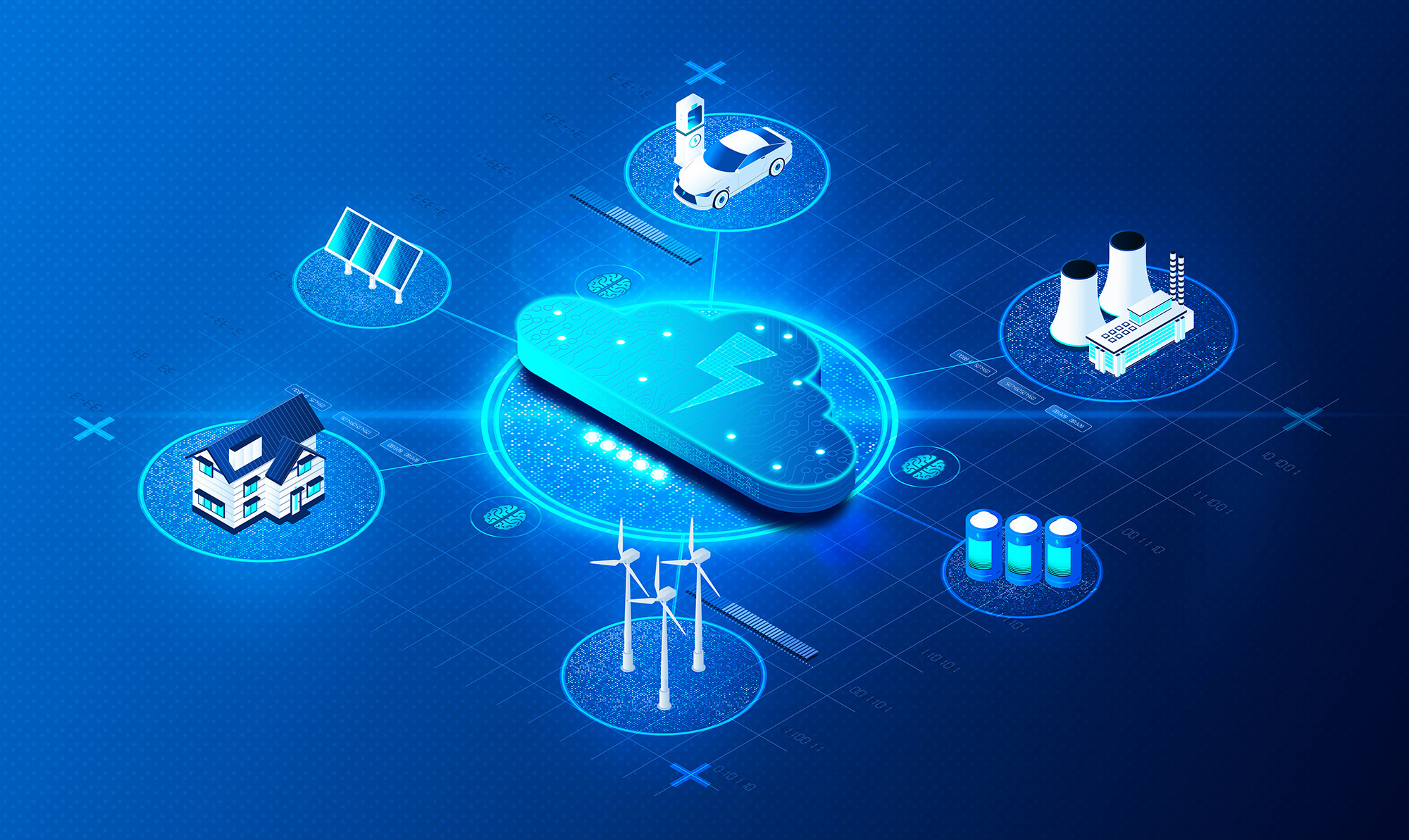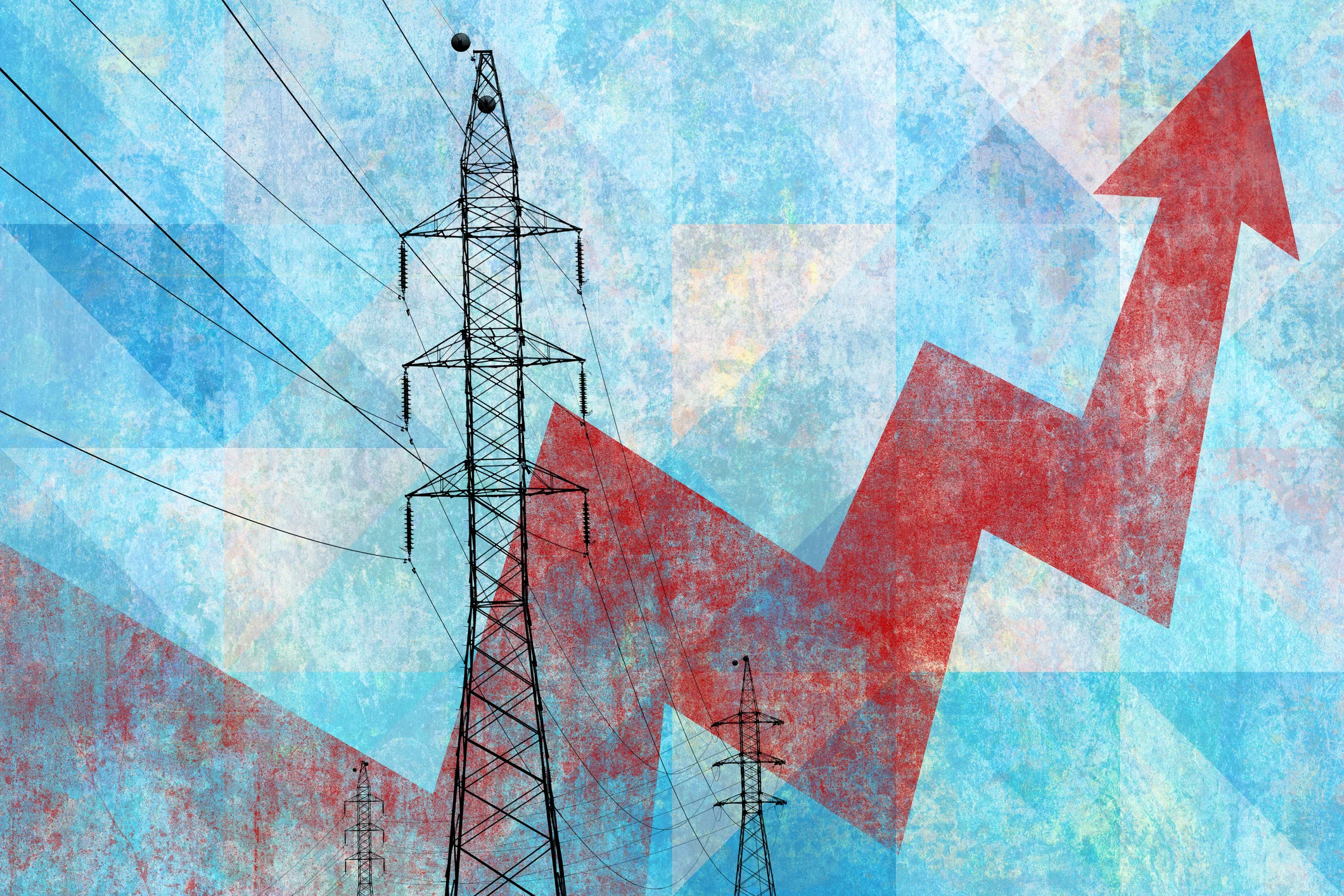In the mid-1960s, Gordon Moore, CEO of Intel, noticed that the number of transistors that could fit into a dense integrated circuit doubled roughly every two years. Moore’s law isn’t a precise prediction, but it does offer insight into a general trend within technology: Products become exponentially more efficient and compact over time. Moore’s law applies to products outside of transistors. It also predicts some of the changes taking place in microgrid and electricity generation technologies.
While Moore’s law has remained surprisingly — although not completely — accurate, Moore didn’t predict that prices would also fall as technologies progressed. The recent interest in rooftop photovoltaic systems partially comes from the falling prices of more efficient solar panels. At the beginning of 2017, consumers could expect to spend about $3.17 per watt. By the end of 2021, that amount fell to $2.27 per watt.
(A concept similar to Moore’s Law, called Swanson’s Law, predicts that the price of solar will decrease 20% every time the global solar capacity doubles.)
Lower prices coupled with government incentives like the Inflation Reduction Act make renewable energy more appealing than ever. As more people invest in energy independence for their homes, they also contribute to the growth of community-based microgrids. These microgrids already play critical roles in some areas, and they will likely become more important across the world as civilization adapts to the demands of climate change.
So…. What is a Microgrid?
A microgrid is a self-contained, localized network of distributed energy resources (DERs) that often relies on renewable energy from solar, wind, and similar sources. A microgrid can deliver electricity to a group of users, many of whom might contribute energy through technologies like rooftop solar systems.
Theoretically, a microgrid could include just one or two households that share electricity. In practice, microgrids often serve dozens or even thousands of households across a geographic area.
Many of today’s microgrids can connect and disconnect from the larger grid as needed. This feature improves the community’s energy security. If the larger grid experiences a blackout, a community can disconnect its microgrid to protect itself from losing power. Community microgrids can also connect to the grid to share excess electricity.
A Brief History of Microgrids
The history of microgrids goes back to the beginning of electric power generation. In 1882, Thomas Edison’s Pearl Street Station started generating and distributing electricity to a small area of lower Manhattan, making it the world’s first microgrid to serve the public.
Within a modern context, microgrids have typically served remote rural areas. Connecting remote communities to a large grid requires significant time and materials. The long-distance between the communities and power plants also makes it more likely that areas will experience power outages. Establishing a microgrid helps lower costs and improve reliability.
More recently, urban communities started adopting microgrid technology. When Hurricane Sandy caused power outages along the East Coast, some communities with microgrids still had electricity. Not surprisingly, nearby residents noticed that some buildings kept their lights on during the outage. Many cities and energy companies began adding microgrids to their energy networks to build more resilient systems.
Microgrid Examples
Today, you can find microgrids throughout the world. Examples in the United States include microgrids located in Los Angeles suburbs and small Puerto Rican municipalities.
Arlington, Washington
Snohomish County Public Utility District (SnoPUD) started planning its Arlington Microgrid and Clean Energy Center project in 2018. By the end of 2022, the microgrid located about 40 miles north of Seattle included:
- A 500-kilowatt solar array
- 1,000kW/1,400 kWh lithium-ion battery energy storage
- Vehicle-to-grid charging stations
- A microgrid control system
A community solar program makes it easy for area residents and businesses to purchase or lease shares of renewable energy without installing rooftop solar systems. Property owners can also connect their photovoltaic systems to the microgrid, enabling them to receive and contribute electricity.
Project manager Scott Gibson explains, “The worst-case scenario is that a disaster might leave the grid along with the transportation infrastructure damaged for several months. The Arlington Microgrid could sustain the local office in the meantime.”
Maricao, Puerto Rico
Hurricanes disrupt Puerto Rico’s energy infrastructure seasonally. When Hurricane Maria devastated much of the island’s power grid in 2017, organizations started rethinking Puerto Rico’s approach to electricity generation and distribution. One of those organizations, the Interstate Renewable Energy Council (IREC), chose Maricao as the site for its microgrid project.
Maricao, one of Puerto Rico’s smallest municipalities, experiences power outages almost daily. The IREC and its partners will establish a microgrid that includes a 75 kW photovoltaic system capable of powering some of the area’s most critical facilities, including healthcare providers.
Other efforts within the community have started transitioning Maricao to a 100% renewable energy plan that includes residential solar panels that contribute to the microgrid.
Menifee, California
Menifee is a Southern California suburb about 25 miles south of Riverside. The Durango at Shadow Mountain community looks like most neighborhoods in Menifee, but its homes are part of a plan to move residential areas toward renewable energy networks that share electricity via microgrids. As of 2022, Durango has 78 homes with 13-kWh rooftop solar systems. The houses are connected to a microgrid and will soon share a 2.3-mWh battery with a neighboring community.
Developers built Durango with sustainability and energy independence in mind. California has experienced a growing number of wildfires as climate change creates higher temperatures and longer droughts. A microgrid that relies on solar power lowers the amount of emissions Durango homes contribute to the atmosphere, offering a long-term plan to mitigate the challenges of climate change.
Importantly, solar-powered microgrids also make it possible for communities like Durango to continue using electricity even during the wildfire season. When the regional grid needs to go offline to prevent sparks that could start fires, Durango homes won’t lose power. Instead, the community can island its microgrid and consume its sustainably generated electricity. Real estate developers in Menifee see this as a superb selling point that makes their homes more attractive to buyers who want to avoid energy disruptions and help protect the environment.
How a Microgrid Works
Modern microgrids only need a few components to serve their populations. The most basic microgrids consist of a power source, such as solar panels, and battery energy storage. As you grow the microgrid to connect more users, you can add DERs like electric vehicles, grid-enabled water heaters, wind turbines, and internet-enabled devices (IoT).
Each DER contributes energy – or stores energy – for users connected to the microgrid to access as needed. Software makes it possible for DERs to act as virtual power plants and use the microgrid for distribution and storage.
Microgrid managers can keep the network connected to the larger grid or disconnect (commonly referred to as “islanding”) the network to protect the community from outages.
Why Microgrids Matter
Microgrids play an increasingly important role in grid flexibility and efficiency. Some benefits of adopting microgrid technology include:
- Reducing the amount of energy lost during transmission and distribution.
- Giving communities more control over their electricity.
- Faster response and recovery times after unavoidable outages.
Critically, today’s microgrids tend to prefer renewable energy sources instead of relying on fossil fuels. This makes it possible for utility companies and governments to lower emissions so they can reach global standards put in place to curb the effects of climate change.
DER Programs and Microgrids
DER programs give microgrid managers more control over energy generation, storage, and distribution. The technologies can work together to improve efficiency and direct energy to where people need it when they need it most. For example, distributed energy resource management systems (DERMS) can give utility companies:
- Real-time and historical data
- Insight into when peak power consumption occurs
- Control over-enrolled devices to manage consumption patterns
- Customer engagement opportunities that encourage conservation
Community Solar
Much like microgrids, community solar programs give microgrids access to affordable, renewable energy. Solar panels distributed throughout the community contribute electricity to the microgrid, which delivers power to homes, businesses, and infrastructure throughout the area.
This approach to energy production and distribution makes communities more independent while lowering emissions that contribute to climate change.
The Future of Microgrids
More affordable photovoltaic rooftop systems will make it easier for communities to build sustainable microgrids that meet most of their energy needs. The future of microgrids, however, will likely evolve beyond the solar panels and lithium-ion batteries used today.
Currently, the Pentagon’s Defense Innovation Unit (DIU) is working with MITRE Corporation and other partners to develop a microgrid reliable at -60 degrees Fahrenheit (-51.1 degrees Celsius). DIU wants a transportable microgrid that military teams can use in the Arctic. The technology could also spur innovations in the commercial market, making it possible for communities in remote areas and extreme environments to enjoy sustainable, safe energy.
Focusing on independent microgrids that can connect as needed creates an opportunity for a paradigm shift in the energy sector. Instead of relying on large networks with numerous weak points, utility companies could commit to building more small-scale grids that coordinate to prevent outages and improve efficiency.
The future of energy generation and distribution probably won’t include one large network that delivers electricity to users. Instead, it will consist of independent microgrids that respond to real-time events. If one microgrid fails, others could contribute power to prevent a complete outage. Alternatively, communities could protect themselves from outages by islanding their microgrids. Instead of a weather event causing a blackout that affects millions of people, the system of microgrids could contain the threat, so it affects a much smaller number of people.
Conclusion: Microgrids
On their own, microgrids won’t solve the challenges created by climate change. However, as an aspect of a diversified energy portfolio, they give communities another tool they can use to protect themselves from weather disasters and unpredictable fossil-fuel prices. As more communities invest in microgrids, they create new opportunities for linking independent systems that can collaborate as needed. It’s a simple concept that started at Edison’s Pearl Street Station and may define the future of energy distribution.





